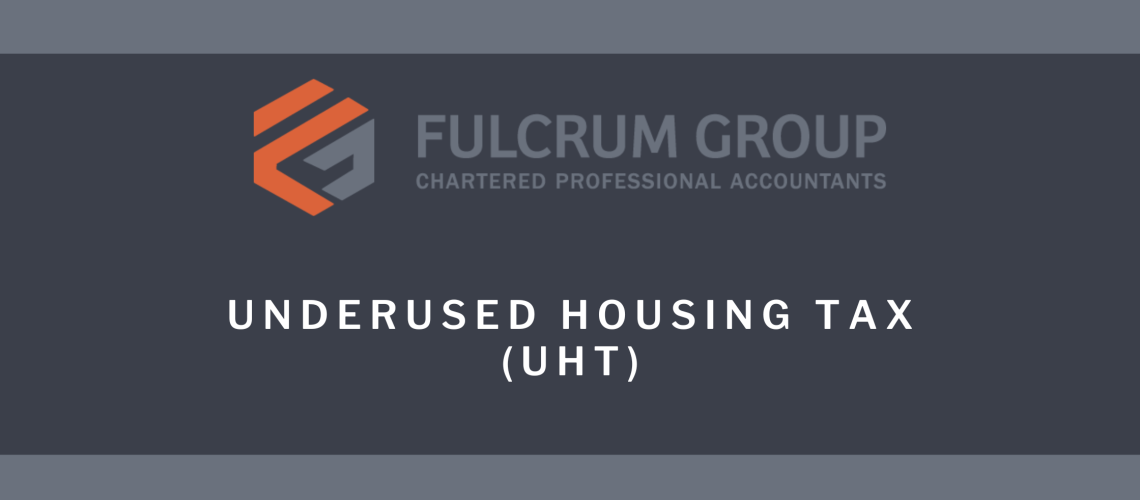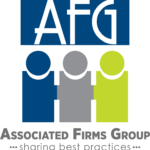By Ian Penner & Sarah Penner
What is the UHT?
As part of the 2022 federal budget, the government passed the new Underused Housing Tax Act. This legislation creates a new 1% tax on the value of ‘underused housing’. While the underused housing tax (UHT) is intended to target foreign ownership, many Canadians through partnerships, trusts and small businesses will be required to file an annual return (Form UHT-2900) even though there are many exemptions from the tax itself. If you own residential property other than your principal residence, it will be essential to review any filing obligations.
Types of Property
Residential property of is defined as one of the following:
- A detached house
- Duplex (2 residential dwellings under one title)
- Triplex (3 residential dwellings under one title)
- Semi-detached house
- Townhouse or rowhouse unit
- Residential condominium
Unaffected property includes properties with 4 or more dwellings such as 4-plexes and apartments.
Types of owners
There are two types of owners in regard to the UHT. Type of ownership is based on December 31 of the calendar year.
‘Excluded Owner’
These are owners that DO NOT have to file the UHT-2900 and include:
- an individual who is a Canadian citizen or permanent resident (except a trustee of a trust or a partner of a partnership)
- a trustee of a mutual fund trust, a real estate investment trust (REIT) or a specified investment flow-through trust (SIFT)
- a corporation whose shares are listed on a Canadian stock exchange
- a registered charity
- a cooperative housing corporation, hospital authority, municipality, para-municipal organization, public college, school authority, or university
- an Indigenous governing body or a corporation wholly owned by an Indigenous governing body
‘Affected Owner’
These are owners that MUST FILE the UHT-2900 regardless of tax obligation and include:
- an individual who is not a Canadian citizen or a permanent resident
- an individual who is a Canadian citizen or permanent resident who owns a residential property as a trustee of a trust (other than as a personal representative of a deceased individual)
- any person, including an individual who is a Canadian citizen or permanent resident, that owns a residential property as a partner of a partnership (this includes those that have filed a rental schedule – T776 on their personal return as a partner with a spouse or other individual)***
- a corporation incorporated outside Canada
- a Canadian corporation whose shares are not listed on a Canadian stock exchange
- a Canadian corporation without share capital
All Affected Owners MUST file a separate return for EACH property even if they are exempt from the tax. Similarly, EACH member of a partnership MUST file a separate return for EACH property.
***Rental properties owned jointly with spouse (common-law partner). There is a possible obligation to file returns for personally owned property including property owned jointly with your spouse. Depending on circumstances, this arrangement can be considered a partnership. We encourage you to consult with your Fulcrum Group advisor to determine your filing obligations.
****Property held in trust (cosigning and estate planning). There is an obligation to file a return when you are listed as the legal owner of a property but do not have beneficial ownership and are then deemed to own the property in trust. Below are two common examples of this but other do exist. Please consult Fulcrum staff if you might be a trust owner.
Scenario 1
A child is unable to qualify for a mortgage and a parent cosigned. Banks requires cosigners to be on title so now the parent is listed in fact as a legal owner. The child is the beneficial owner. The parent owns the property in trust and is deemed to be a trustee. The parent must file a UHT-2900 return (but will generally be exempt from tax). The child does not have a filing obligation for their personal residence.
Scenario 2
An aging parent is now the sole owner of their home. In order to simplify the estate a child/children are added to the title of the home. This is often done so the property can avoid probate. The child/children are now legal owners of the property but beneficial ownership is still solely that of the parent. The child/children have become trustees and must file a UHT-2900 return (but will generally be exempt from tax). The parent does not have a filing obligation for their personal residence.
Exemptions
Affected owners have several exemptions that will remove any tax obligations. However, even where exemptions apply, the affected owner will still be required to file the UHT-2900 return. The exemptions are classified in 3 parts as defined on Form UHT-2900.
Part 4 Exemption
Exemption for primary place of residence
The property must be the primary place of residence for any of the following:
- You
- Your spouse or common-law partner
- Your child who is pursuing authorized study at a designated learning institution
- Your spouse’s child who is pursuing authorized study at a designated learning institution
Part 5 Exemptions
Exemption for qualifying occupancy
The property must have one or more qualifying occupancy periods totaling at least 180 days where each day is part of increments of at least 1 month. (Short term rentals do not qualify for this exemption).
You will need to provide the total number of days on UHT – 2900 if claiming one of the following exemptions.
- An arm’s length individual was given continuous occupancy of the dwelling under a written agreement
- A non-arm’s length individual was given continuous occupancy of the dwelling under a written agreement for consideration that is not below fair rent[i]*
- You or your spouse or common-law partner have continuous occupancy for the purpose of pursuing authorized work under a Canadian work permit
- Your spouse, common-law partner, parent, or child, who is a Canadian citizen or permanent resident of Canada, has continuous occupancy
For individual owners who are neither Canadian citizens nor permanent residents, if between you and your spouse you own multiple residential properties, your ownership may not qualify for Part 4 or Part 5 exemptions. You and your spouse must each file an election with the CRA to designate only one property (the same property) for the purposes of the Part 4 and Part 5 exemptions.
Part 6 Exemptions
Other exemptions
- You own the property as a partner of a specified Canadian partnership[ii].
- You own the property as a trustee of a specified Canadian trust[iii].
- You own the property and are a specified Canadian corporation[iv].
- The property is not suitable for year-round use.
- The property is seasonally inaccessible.
- The property was uninhabitable for a minimum of 60 consecutive days due to a disaster or hazardous conditions beyond your control.
- The property was uninhabitable for a minimum of 120 days due to renovations. (This exemption cannot be used if it was used in the previous 9 years)
- You became the owner of the property in the calendar year and you had not been an owner of that property in the previous 9 years.
- The owner died during either the current or in the previous calendar year.
- You are the personal representative of a decreased individual who was an owner of the residential property during the calendar year or the previous calendar year
- You were an owner of the residential property with an individual who was also an owner of the residential property on the day the individual died in the calendar year or the previous calendar year, and the deceased individual’s percentage of ownership was at least 25%.
- Construction of the residential property is not substantially completed before April of the calendar year.
- Construction of the property is substantially completed between January and March of the calendar year, the property is listed for public sale, and the property has not been occupied.
- The property is located in an eligible area and is used as a place of residence by you or our spouse (common-law partner) for at least 28 days during the calendar year.
If you qualify for any one of the part 4, part 5 or part 6 exemptions, then there is no tax obligation.
Calculation of Tax
If you do not qualify for an exemption, you must calculate the tax owing for the calendar year.
Calculation:
Taxable value of the residential property x 1% x ownership %
Taxable value of the property is determined as follows:
Greater of:
Assessed value (obtain from property tax assessment)
OR Most recent sale price on or before December 31 of the calendar year
A Fair Market Value election can also be done to use the fair market value of the property rather than the taxable value. The amount reported as the fair market value of the residential property must be supported by a written appraisal prepared by an accredited real estate appraiser that was done specifically for the purposes of the UHT. This appraisal must be prepared between January 1 and April 30 of the following year.
Penalties for not filing
- Minimum $5,000 for affected individual owners
- Minimum $10,000 for affected corporate owners
Filing Deadline
The filling deadline for all UHT-2900 forms is April 30th of the year following; however, an extension was granted for all 2022 returns to October 31, 2023. For future years, the deadline will remain April 30th.
Documentation
Several pieces of information are needed to file your UHT return, including a valid CRA tax identifier number (such as Social Insurance Number or Business Number). Corporations will also need to register for an Underused Housing Tax (RU) program account identifier code.
If you engage Fulcrum group to file the UHT 2900 on your behalf we will need the following for each property you or your spouse or common-law partner own:
- A signed engagement letter
- Mailing address
- Citizenship of individual owner
- Address of property
- Current year (2022) property tax assessment
- Property ID from registration system (in Alberta this is the title number from Alberta Registries) – Fulcrum can generally access this number for properties in Alberta through the Alberta registries portal at no charge.
- A description of the type of property (see types of property above)
- Year ownership was acquired.
- Type of ownership
- Sole
- Joint tenancy (ownership is evenly split between the owners with the right of survivorship, that is, when one owner dies their ownership is passed to the surviving owners and is not subject to probate).
- Tenants in common (ownership can be freely decided, that is, when an owner dies their ownership passes according to their will and is subject to probate).
- A list of all other owners and everyone’s percentage of ownership for each property you own
- Original purchase price of the property. This can be confirmed through Alberta Registries if you are unsure of the exact amount.
A separate UHT-2900 return will be required for each property in which you have affected ownership. The forms can be submitted to CRA either through your CRA My Account or by mail to your designated tax centre (Winnipeg Tax Centre for Alberta residents).
[i] Fair rent is 5% of the taxable value of the residential property for the calendar year
[ii] A specified Canadian partnership is where all partners are either an excluded owner, and would be an excluded owner if they were not part of a partnership, or specified Canadian corporations (below)
[iii] A specified Canadian trust is a trust were each beneficiary on December 31 of the calendar year is either an excluded owner or a specified Canadian corporation.
[iv] A specified Canadian corporation is a corporation incorporated under federal or provincial laws in Canada and at least 90% of the equity and voting shares are owned by Canadian citizens, permanent residents or specified Canadian corporations.,



